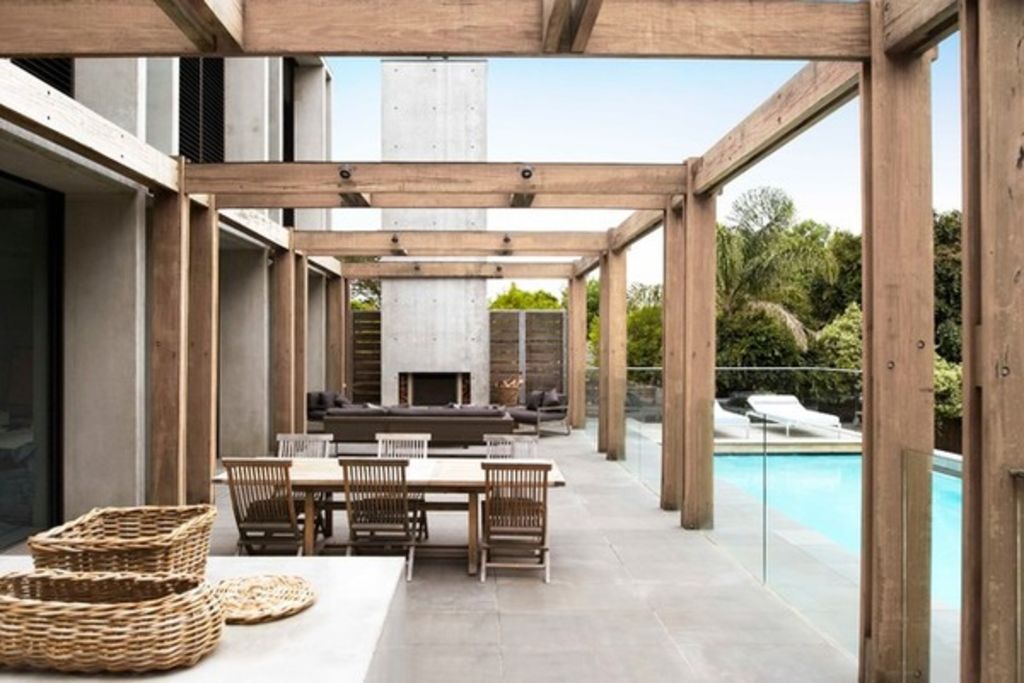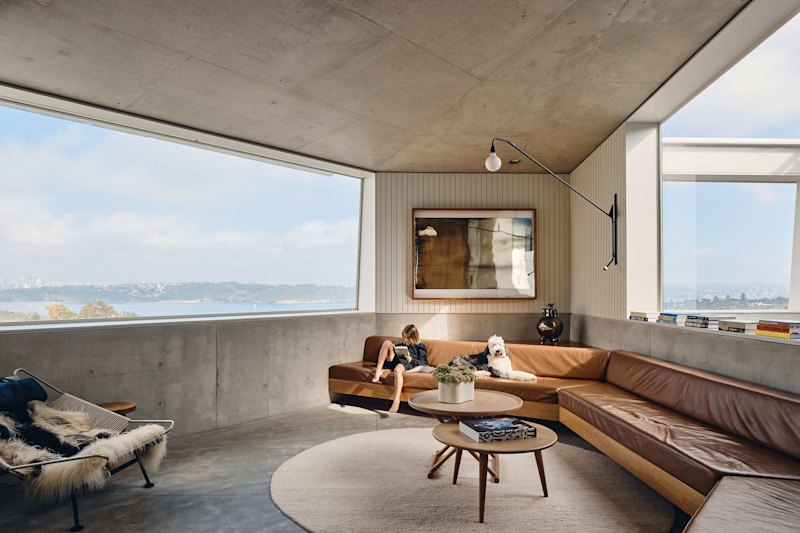Six important decisions you'll have to make when building or renovating

Contemporary Patio by Robert Mills Architects and Interior Designers
Author: Adam Hobill
Building and renovating is a process that involves constant decision making. It is easy to feel overwhelmed by the dozens of decisions you will need to make and the hundreds of options available to you. The good news is that you don’t have to make all of these decisions at once, and with the right advice and direction, you shouldn’t need to make them all on your own, either. By dealing with these primary issues thoroughly, you will be well placed to navigate the other decisions that need your attention throughout the process.
For the purpose of this article, I am going to assume that you already have a block of land selected or that you already own the home that you will be renovating or extending; as site and house selection is a topic in its own right.
1. How much budget you will allocate
Determining and understanding your budget is an important first step in any project, as your budget will shape many future discussions about how your project is designed and executed. When thinking about your budget, you will need to think about the whole package, including design and approval fees, building costs and finishing costs like furnishings and landscaping. It is also important that you discuss your budget in detail with your architect or designer so that they have a thorough understanding of how you intend to allocate the money.
An honest approach when doing this will get you the best results; there is no point in keeping ‘a bit up your sleeve’ when talking to the designer about your budget as it may lead to a lesser design solution if the designer feels they don’t have a suitable budget for the best design solution.

2. The size of your home
The size of your home is likely to have the biggest impact on the cost to build. I want to encourage you to really think about how big your home needs to be to suit your family. We all want to create the best possible lifestyle and quality of life for our family, but somewhere along the way we have convinced ourselves that bigger is better and that ‘keeping up with the Joneses’ and resale is more important than focusing on our individual and specific needs.
Building and renovating is a big financial commitment and I believe you should be thinking very carefully about what it is about a home that is important to you and your family, not to your neighbour or a future buyer; especially if it means that your home will be essentially the same as 90 per cent of the homes in your street.

Rather than doing what everyone else is doing; trying to predict what future buyers may want; or trying to match your neighbours, I would argue that building something unique and tailored to your needs through high-quality design is a better way forward and will have more rewards in the long run. Why build a four- or five-bedroom home for resale purposes if you only need a three-bedroom home? Plus, if everybody else is building similar homes, yours is more likely to be lost in the crowd when the time comes to sell. By thinking about a smaller, more efficient home, you will have more money in your budget to spend on quality design and finishes rather than potentially dull and under-utilised additional space.
3. Whether you will choose a designer or architect
One of the most important decisions you’ll have to make is selecting a designer or architect. Think about how involved you want to be in the design process and make sure that you articulate that with your shortlist of designers. Some designers will be open to working with your ideas and others will prefer to be able to explore their own design solutions to meet your brief. It is important to understand their approach, otherwise it may not be the most productive relationship.
It’s crucial to ensure that your designer can demonstrate experience and success in responding to a brief and a budget that is similar to yours. Designing to a budget is an important skill and one that requires a level of experience in the marketplace, and it should feature highly in your list of requirements. Talking to a designer about a small project with a modest budget may be a waste of time if they are only familiar with working on large projects with big budgets.

Having a detailed understanding of how fees are charged is also very important so that you can be sure you are getting value for money and that your design isn’t stifled by a misunderstanding of the fee structure.
There are several ways that fees may be charged, including hourly rates, a percentage of the project cost, lump sum fees and costs per square metre. Each of these options will have pros and cons. For example, the cost per square metre method is very transparent for new homes but can be confusing with extensions and renovations as it is difficult to predict the final scope of renovation involved and how to apply fees to that. Regardless of how fees are charged, it is important that you understand how your chosen fee model works. You should also ensure that the fees are fixed or capped so that you understand the upper limit of what you will need to pay.
Understanding fees goes hand in hand with understanding what level of service you require. Do you simply need your ideas turned into professional drawings so that they can be approved for construction or do you need a full design service that may also include contract administration, where the designer deals with the builder throughout the course of the build? There are many levels of service and the difference in fees can be tens of thousands of dollars, so it pays to be clear on what services you require. If you are unsure of the options available, don’t hesitate to ask. Then, when you receive fee proposals, make sure they clearly set out the services being offered and the deliverables.
Finally, don’t underestimate the importance of personalities in this process, especially if you require your architect or building designer to help you refine your brief and find solutions to suit your personal needs and lifestyle. You will need to get along with the designer or architect and be able to communicate your needs and desires with the confidence that they ‘get’ what you are saying.
Browse top building designers in your area

4. How you will determine the quoting process
Depending on the design services you have selected, you will either be getting help with the quoting process from the designer or architect or you will be doing it alone. If you have engaged the designer to carry out this task, you need to trust their methods, however the following comments are worth paying attention to.
One of the reasons builders submit seemingly outrageous quotes is because they don’t have the confidence to quote the project competitively, which often happens when there is insufficient or poor documentation. The first step to avoid this is to ensure that you have high-quality documentation to enable the builders to prepare a thorough and transparent quote. A confident quote is more likely to be a competitive quote. So in addition to your professionally prepared drawings, you should also prepare an Inclusions Schedule to accompany the plans.
The Inclusions Schedule sets out specific allowances for dozens of items that are likely to be missing from the drawings, so must otherwise be guessed by a builder; or left out of the quote altogether, which is an even worse result as it leaves you exposed to cost variations and budget blow-outs. For example, a kitchen may have 15 or more separate selections or allowances required; and if they are not detailed transparently, they can easily result in distorted and misleading quotes with thousands of dollars of inconsistencies.
When selecting builders to quote your project, you should be looking to limit the number of quotes to three or four. Do some research, ask for recommendations and meet or talk to builders to create a shortlist of builders that meet your criteria. You are going to be spending a significant amount of money on your project so you want to make sure that you are dealing with the ‘right’ builders, not simply the cheapest builders. Don’t underestimate how time-consuming the process will be, and the more builders you are trying to communicate with, the more distracted and confused you will get. Trust the shortlist of builders you have created and focus your time on them. You are also likely to get better responses and more competitive quotes from builders if they know they are quoting against two or three other builders, rather than six or seven.

5. How you will select a builder
All going well, you will have three or four quotes to dissect and compare. You are likely to see that each builder will present their quote differently, which can make it difficult to compare ‘apples with apples’ (this is one area where using a detailed Inclusions Schedule helps enormously to keep all of the builders on the same page). You will also probably be surprised at the price range in quotes; and for that reason you need to consider the quotes very carefully, making sure you understand what is included in each one.
You should also ask each builder to confirm what is excluded from the quote. By highlighting items that are excluded, you will be able to get a better comparison across each quote. Some of the more common items that are excluded from quotes include: government fees and charges, consultants’ fees, asbestos removal, retaining walls, driveways, footpaths, fencing, floor coverings and curtains and blinds.
Understanding quotes and untangling building jargon
Be very careful if you are considering accepting a quote that is significantly less than a grouping of other quotes. The cheaper quote may be appealing, however you should place some trust in a grouping of quotes as being the ‘right’ price to complete the project. Beware the quote you were hoping to receive!
Finally, be mindful that you will be spending a lot of time with your builder, so having a rapport with them is very important. It will help with the months of communicating throughout the build process, so starting on the same page as each other will give you a great head start.
Find home builders in your area
6. Whether you will need additional assistance
Depending on the project, you may also need to consider what additional assistance you might need from other specialised designers, like landscape designers, interior designers and even lighting designers. Your budget is likely to be the biggest factor in the extent to which you utilise these services, however while each has a cost involved they also have the potential to significantly enhance and add value and quality to your home.
For example, a good interior designer should also be able to work with a modest brief and budget and demonstrate ways in which cost-effective products and finishes can be used to enhance a project. Too often I see the results of where people buy expensive products and finishes, thinking that the product alone will create the ‘wow’ factor they are looking for, when in fact they could well have achieved a far better result with more cost-effective materials and more consideration given to the actual design.
Similarly, a lighting designer can demonstrate ways to help you eliminate the number of lights required in your home so that you can afford better quality lighting, each selected for a particular purpose that enhances the design. This is likely to be a far more interesting lighting design than simply installing runways of downlights. Have a think about which areas are most important to you and allocate some time and money to finding the right people who can help you enhance the design – the results can be striking and don’t always have to cost a fortune.
We recommend
We thought you might like
States
Capital Cities
Capital Cities - Rentals
Popular Areas
Allhomes
More







